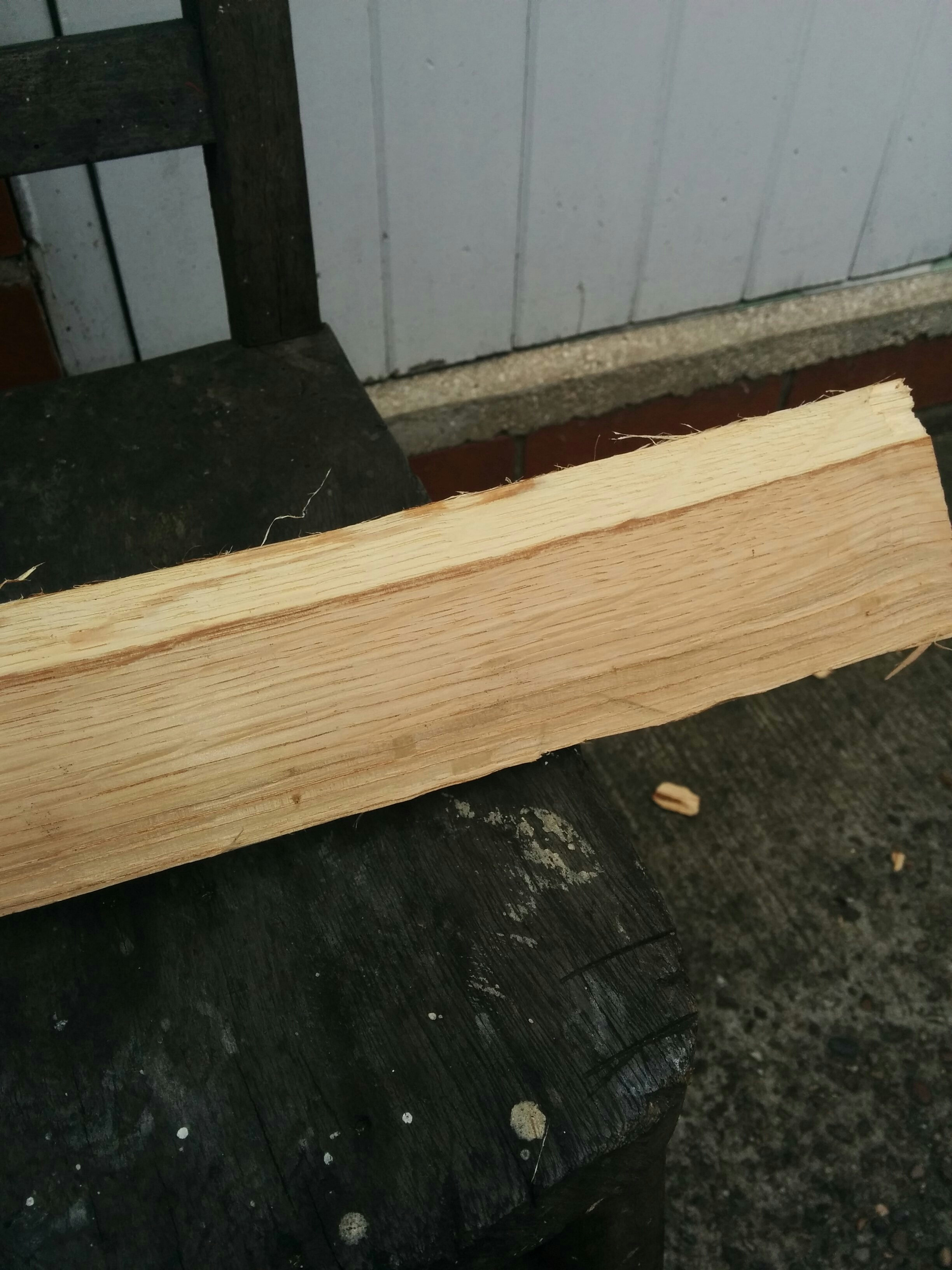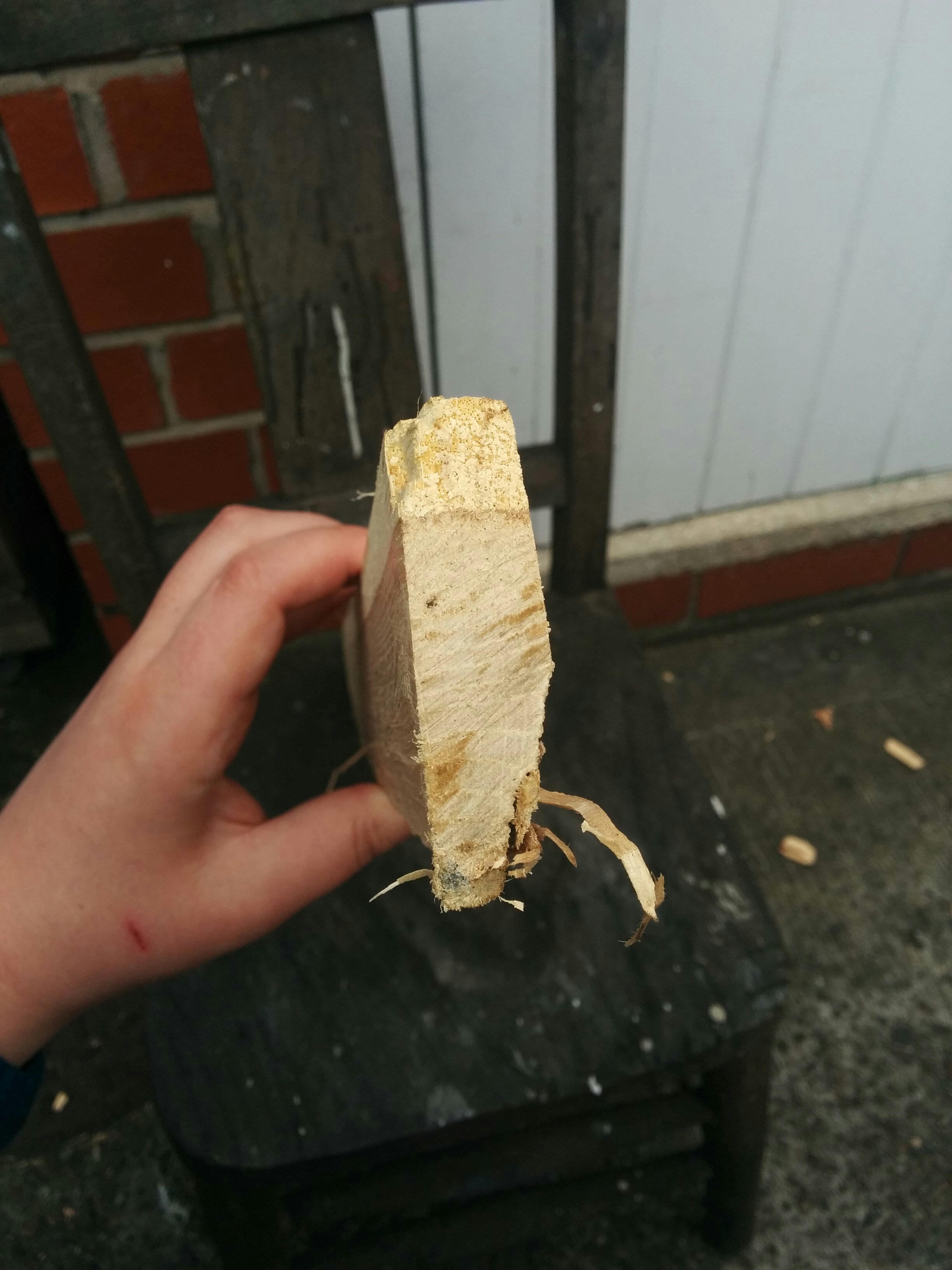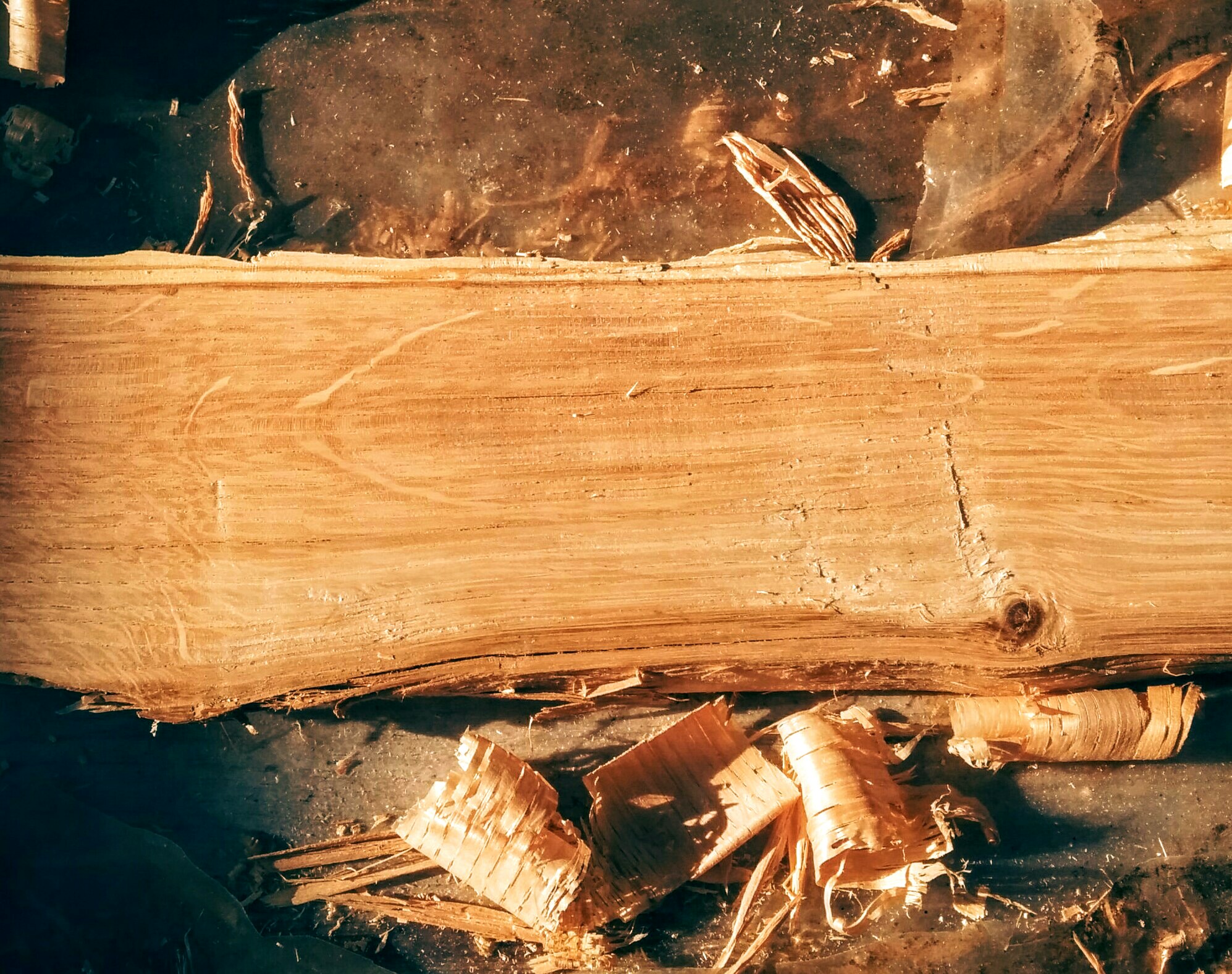This afternoon I split one of my oak logs (1.8m long, 14" in diameter) into 10 reasonable segments, which should give a selection of boards between 1.5x3 and 2x4, once the remainder of the sapwood and pith is gone.
Two in particular have a marked twist, and all are distinctly trapizoidal, in principle its easy to sort with a scrub plane and try plane... At least it would be if I could work out how to hold them whilst getting the first flat surface. Oh and I only have two sawhorses (albeit the sawhorses are built from 100mm redwood firsts, which gives them some heft) to work on.
Would I be better attempting to hold them between wedges nailed to the horses and resaw them to a rough dimension, or try to pin them down and plane them somehow.
If all else fails i'll leave them on their stickers under cover for another 12-18 months and run them over my planer (the seasoning gives me ample time to have sorted the tables and knives out) by then.
Edit: In the process I learned that if one owns a hatchet, a froe is optional; much in the same way that owning molegrips makes a steering wheel optional...
Two in particular have a marked twist, and all are distinctly trapizoidal, in principle its easy to sort with a scrub plane and try plane... At least it would be if I could work out how to hold them whilst getting the first flat surface. Oh and I only have two sawhorses (albeit the sawhorses are built from 100mm redwood firsts, which gives them some heft) to work on.
Would I be better attempting to hold them between wedges nailed to the horses and resaw them to a rough dimension, or try to pin them down and plane them somehow.
If all else fails i'll leave them on their stickers under cover for another 12-18 months and run them over my planer (the seasoning gives me ample time to have sorted the tables and knives out) by then.
Edit: In the process I learned that if one owns a hatchet, a froe is optional; much in the same way that owning molegrips makes a steering wheel optional...




































